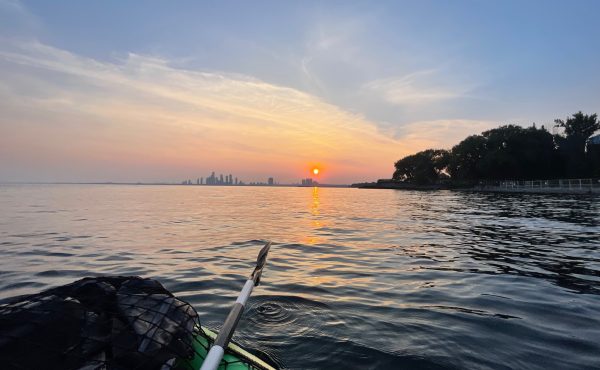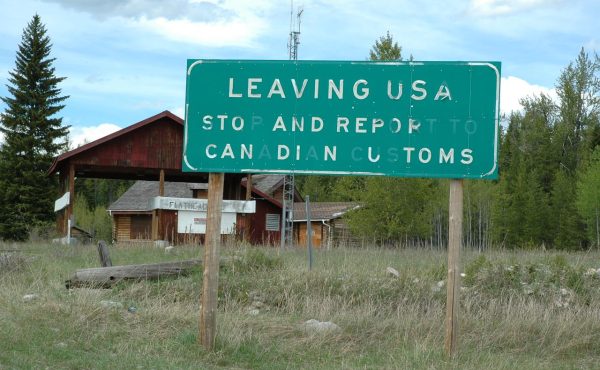This regular online series will feature interviews with fascinating and influential urban thinkers, with a focus on discussing how Toronto can become a more engaged, accessible, and sustainable city.
Last week, Spacing interviewed Sharon Switzer of Onestop media. As a follow up to Sharon’s interview, we decided to sit down with Katerina Cizek to discuss her documentary – One Millionth Tower. A documentary about high-rise living, One Millionth Tower is the first installment of the High Rise series to be showcased on Onestop’s network of subway station screens. In this interview, Katerina discusses the interactive nature of her film as well as its very important subject matter – Tower Renewal.
Spacing: Like previous installments in the High Rise series, One Millionth Tower documents life in high-rise apartment buildings. Can you explain your fascination with high-rises?
Cizek: For many years they were just buildings I drove by and ignored. I didn’t think about them too much until I started learning about Toronto as a “vertical city.” I discovered that we have more high-rises than any other city in North America except New York City. I began to look at these buildings in a whole new light after that realization and after finding out about David Hulchanski’s research on income segregation in Toronto. One of the reasons we don’t think of ourselves as a vertical city is because most of these buildings are pushed out into the inner suburbs.
Spacing: How does this latest installment expand on themes explored in your previous documentaries Out my Window & One Thousandth Tower?
Cizek: Out my Window is a documentary about the towers of the world. It’s an amalgam of all these different towers that together provide a picture of a “global high rise.” One Millionth Tower builds on work we had been doing in a Rexdale high-rise for One Thousandth Tower. It takes a very local story about people living in a high-rise on Kipling Avenue and expands on it by tapping into the energy and spirit of the people living there. The residents team up with architects to re-imagine the space around their building. So, from Out my Window to One Millionth Tower, it’s a progression from a very global project back to our roots here in Toronto.
Spacing: One Millionth Tower is presented in a very unique, interactive way. Can you tell us about how the documentary works?
Cizek: It started off as a fairly simple project. I just wanted to do a straightforward documentary on the participatory methods being employed by architects at this one Etobicoke high-rise. Then I started learning more about “Popcorn” which is an html 5 open source project. So I asked our web developer to look into it and he came back with some pretty remarkable ways of adapting an html framework to our project. He also discovered another web technology called WebGL, which was a brand new at the time. WebGL allows you to create a 3D environment within a browser. He suggested it because our story lends itself to 3D. I was really impressed with the demo he created and we decided to break our linear story into pieces. One Millionth Tower is not a game but it provides a game environment where users can move around the space to discover various stories.
Spacing: As a technology, WebGL appears to be really useful in telling a story about tower renewal?
Cizek: Absolutely, there is a beautiful parallel to be made between the content of the story, which is about residents participating in redesign and, open source web technology as a tool. Resident participation reflects this notion that we are part of a city that we build and create everyday. Similarly, open source web technology is built on the philosophy that the Internet is something that we own and have a responsibility and a right to create. I think the documentary is a beautiful dovetailing of form and content. 3D is also helpful in terms of imagining the physical changes that could be made to various high-rise environments. What’s so exciting about this project is that everything I’ve done as a filmmaker up until now has been 2D. It was always flat and square and the only tools I had to work with were audio and visual. Now we’re introducing the dimension of space into the story.
Spacing: How enthusiastic were residents of this Etobicoke high-rise about re-imagining their environment?
Cizek: It was a pretty disenfranchised community when we first arrived. People didn’t answer their doors and rarely spoke to their neighbours. There are so many issues people have to deal with in their everyday life but nonetheless, an incredible community of partnership evolved. It started quite some time ago with the involvement of organizations like Microskills, The United Way, the City’s Tower Renewal Office and The Action for Neighbourhood Change (ANC). The ANC were gracious enough to lend us their meeting room every week to meet with residents. The most significant outcome is not the documentary itself but the building up a new kind of relationship between the various stakeholders who need to be involved in re-imagining our city. The part that excites me the most is people and organizations getting involved in that process.
Spacing: So what kind of renewal ideas did residents come up with?
Cizek: It’s all portrayed in the documentary but together with the architects they identified four to five locations around their high rise in need of work. In teams of two or three, they mapped out and illustrated potential changes for the surrounding space. Most ideas revolved around children. One of the architects is quoted in the film saying “…to design a space for children is to design a space for everybody.” I think that really holds true, at least in my experience visiting this building.
Spacing: Now that you’ve made a series of documentaries on post-war high-rises, do you view tower renewal as being a very urgent matter?
Cizek: Yes. I think overall housing is a major concern in this city. I think our vacancy rate is close to zero and the waiting list for subsidized housing in this city is skyrocketing. On top of everything, we are a growing city. The figure I heard is that 300 people arrive at Pearson Airport everyday looking for a place to live. So when you combine all these factors with the fact that we have all these aging high rises that are coming to the end of their first lives, some investment is required to make them safe, affordable and accessible. This is good housing stock that we can really leverage for ourselves as Toronotonians.
Video by the National Film Board of Canada




